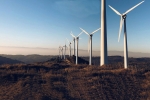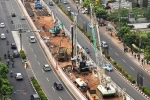Logistics industry: Catalyst for container growth in eastern region
This article has been translated by PwC Indonesia as part of our Indonesia Infrastructure News Service. PwC Indonesia has not checked the accuracy of, and accepts no responsibility for the content.
Bisnis Indonesia - Industri logistic: Pemantik pertumbuhan peti kemas kawasan timur
28 June 2024
By Nugroho Nafka Kassa
The operation of Parepare Port is positively impacting the container performance of PT Pelabuhan Indonesia (Persero) Regional 4. Additionally, ship navigation services at special terminals in Kalimantan also boosted the performance from January to May 2024.
From January to May 2024, PT Pelabuhan Indonesia (Persero) Regional 4 logged a total of 978,771 twenty-foot equivalent units (TEUs) of containers across all its ports. This realisation increased by 11% year-on-year (YoY) compared to the same period last year.
Pelindo Regional 4 Executive Director 4 Abdul Azis attributes the double-digit growth to performance improvement of PT Meratus Line, particularly at Makassar Port.
Besides that, since May 2024, the company has begun operations at Parepare Port. He added that this increased stevedoring activities, significantly impacting container realisation in Indonesia’s eastern region.
“The increase in the container stevedoring activities of Meratus Line at Makassar Port is attributed to the increase in consumables in Makassar approaching Eid. Since May 2024, they have been carrying out container stevedoring activities at Parepare Port,” he explained in his official statement on Thursday (27/7).
He revealed that the increase in container traffic was also supported by ports around Nusantara Capital City (IKN), such as Kaltim Kariangau Terminal (KKT) Container Terminal located in the Balikpapan Port area and Palaran Container Terminal in the Samarinda Port area.
Meanwhile, regarding non-container traffic, Pelindo Regional 4 also logged an epic performance from January to May 2024 with a realisation of around 33.72 million tonnes per cubic metre. This increase is attributed to the rise in coal stevedoring activities at Bayan Resources’ special terminals at Balikpapan Port and Samarinda Port.
Pelindo Regional 4 also recorded a total of 35,611 ship calls across their managed ports from January to May 2024.
Aziz stated that this growth was supported by the expansion of ship navigation services in Kalimantan, particularly in Berau Regency and Balikpapan City in East Kalimantan.
According to him, in the Tanjung Redeb working area in Berau Regency, his company successfully established a cooperation for ship navigation service with the coal mine company PT Berau Coral. This partnership supports the navigation of coal barge ships operating at the Gurimbang, Lati, and Suaran jetties.
At the same location, he added that there was also an increase in barge ship navigation at the ship-to-ship (STS) and mooring locations.
Meanwhile, in Balikpapan, Aziz revealed that the penetration of the navigation market that has been continuously established at several special terminals around the waters of Balikpapan Port has also increased ship traffic.
Some of the special terminals include those operated by PT Kutai Refinery Nusantara and PT Pertamina Lawi-lawi.
“The increase in ship traffic in the eastern region is partly due to Pelindo Regional 4's successful enhancement of ship navigation services in Kalimantan,” he explained.
Logistics hub
Previously, an economist from Universitas Hasanuddin Hamid Paddu explained that the capacity development of Makassar New Port (MNP) would reduce logistics costs and increase cargo volume.
This will trigger the growth of industries in South Sulawesi.
Besides that, he added that the position of MNP as a logistics hub was forecasted to facilitate more direct calls from Makassar to other countries.
Therefore, Hamid sees that export costs will be more affordable, which will enhance the competitiveness of commodity prices in South Sulawesi.
This can be realised and maintained consistently. He believes that the economic growth in South Sulawesi can surpass 9%-10%, sustaining national growth above 6%-7%.
“Economic growth outside Java, such as in Sulawesi, can be achieved through port development. Java is already too crowded. With these efforts, I believe Indonesia can grow above 6%-7%. At least, we can get out of the middle-income trap,” he told Bisnis.
Hamid added that regions in eastern Indonesia only needed to prepare additional infrastructure, such as direct access from production centres to ports and improved modes of transportation, which are still serious challenges.
For example, in South Sulawesi, supporting infrastructure like toll roads is only available in Makassar and has not yet reached its surrounding areas, which are known as production centres.
The planned railway for carrying logistics is also not yet completed.
Besides that, he added that the width of roads in the area could not support access for semi-trucks, limiting deliveries from reaching their maximum capacity.
“The primary infrastructure should connect production centres and industries to hubs in each respective region, such as ports. In South Sulawesi, the railway should ideally extend to MNP. The toll road should link industries directly to the port. The goal is to ensure that cargo can reach the port swiftly and efficiently,” he explained.
Next article: Jakarta LRT Phase 1B set to operate in 2027


















